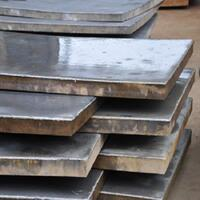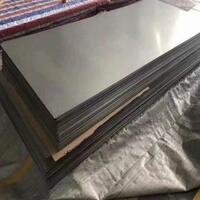Intro to Stainless-steel Plates: A Product Specifying Stamina, Longevity, and Technology
Stainless-steel plates are amongst one of the most functional and important materials in modern-day engineering and building. Understood for their corrosion resistance, mechanical strength, and aesthetic allure, these plates act as foundational components throughout a large range of sectors– from aerospace and vehicle to design and chemical processing. As commercial demands expand and sustainability comes to be a central problem, stainless steel plates continue to evolve via advanced metallurgical advancements and making innovations that enhance efficiency while minimizing environmental influence.
(Stainless Steel Plate)
Make-up and Kinds: Comprehending the Metallurgy Behind Stainless-steel Plates
Stainless-steel plates are mainly composed of iron, chromium, nickel, and various other alloying elements that determine their specific buildings. Chromium content– generally above 10.5%– forms a passive oxide layer on the surface, providing exceptional deterioration resistance. Based upon microstructure, stainless steels are classified right into five major family members: austenitic, ferritic, martensitic, duplex, and precipitation-hardening (PH) stainless steels. Each type provides unique combinations of toughness, toughness, and thermal resistance, permitting engineers to select the most ideal quality for applications varying from marine atmospheres to high-temperature commercial furnaces.
Production Refine: From Raw Products to High-Performance Plates
The manufacturing of stainless steel plates involves a number of critical stages, consisting of melting, spreading, hot rolling, annealing, pickling, and cold rolling. Electric arc heaters or argon oxygen decarburization (AOD) converters are utilized to thaw resources such as scrap metal and ferroalloys. The liquified steel is then cast right into pieces, which undertake warm rolling to decrease thickness and boost grain framework. Succeeding procedures like annealing soothe interior tensions, while marinading removes surface oxides. Cold rolling even more boosts dimensional accuracy and surface finish. Advanced strategies such as laser welding and additive manufacturing are now being incorporated into plate fabrication, enabling higher personalization and performance optimization.
Mechanical and Corrosion-Resistant Residences: Why Stainless Steel Plates Are Preferred Throughout Industries
Stainless-steel plates excel due to their remarkable mechanical residential or commercial properties, consisting of high tensile strength, effect resistance, and exhaustion endurance. Their capability to maintain architectural stability under extreme temperature levels makes them optimal for cryogenic tank and high-temperature exhaust systems alike. Corrosion resistance is an additional specifying feature, specifically in hostile environments such as offshore oil systems, chemical plants, and wastewater therapy centers. The presence of molybdenum in certain grades, such as 316 stainless-steel, dramatically enhances resistance to matching and gap corrosion in chloride-rich conditions. These attributes guarantee lengthy service life, marginal upkeep, and cost-effectiveness over time.
Applications Across Key Sectors: A Product That Powers Global Industries
Stainless steel plates are indispensable in various sectors. In building, they are used for façades, roofing, and structural supports because of their toughness and streamlined appearance. The vehicle sector uses them in exhaust systems and body panels for rust protection and lightweighting. Aerospace producers rely upon high-strength, heat-resistant qualities for engine elements and airframe structures. In energy and chemical handling, stainless-steel plates develop stress vessels, piping systems, and reactor linings efficient in withstanding harsh operating problems. Even in food processing and clinical equipment, where hygiene is extremely important, stainless-steel plates supply non-reactive surfaces that meet stringent sanitation requirements.
Market Trends and Development Motorists: Why Demand Continues to Increase Globally
Worldwide demand for stainless steel plates gets on a higher trajectory, driven by urbanization, framework advancement, and the expanding focus on sustainable products. Arising markets in Asia-Pacific, particularly China and India, are increasing their commercial abilities, boosting consumption. Environmental regulations favoring recyclable and resilient materials have actually also boosted adoption. Technological innovations, such as automated welding and accuracy cutting, are boosting manufacturing effectiveness and item consistency. Moreover, the rise of environment-friendly structure qualifications has raised using stainless steel in architectural layouts that focus on long life and appearances.
Obstacles and Sustainability Considerations: Resolving the Market’s Pressing Issues
( Stainless Steel Plate)
In spite of its numerous advantages, the stainless-steel plate industry deals with challenges connected to power consumption, carbon exhausts, and resource schedule. The production process remains heavily dependent on power and fossil fuels, contributing to greenhouse gas exhausts. Recycling initiatives are durable, with stainless steel being 100% recyclable, yet enhancing circularity calls for much better end-of-life healing systems and green manufacturing techniques. Advancements such as hydrogen-based smelting and bio-leaching of basic materials are being explored to straighten with international net-zero targets. Furthermore, changing rates of nickel and chromium can affect market security, motivating interest in different alloys and finishing innovations.
Future Potential Customers: Developments, Smart Integration, and the Future Generation of Stainless Steel Plates
Looking ahead, the future of stainless steel plates hinges on smart materials, electronic combination, and lasting development. Advances in nanotechnology and surface area design are leading the way for ultra-thin, high-strength plates with improved wear and corrosion resistance. Additive production allows intricate geometries previously unattainable via standard approaches. Digital doubles and AI-driven material modeling will certainly optimize performance forecasts and lifecycle monitoring. As sectors push for carbon neutrality and resource performance, stainless steel plates are anticipated to play a pivotal role fit resilient framework, renewable resource systems, and next-generation transport services.
Distributor
MetalPlates4u is a trusted global chemical material supplier & manufacturer with over 12 years experience in providing super high-quality metals and metal alloy. The company export to many countries, such as USA, Canada,Europe,UAE,South Africa, etc. As a leading nanotechnology development manufacturer, Metalinchina dominates the market. Our professional work team provides perfect solutions to help improve the efficiency of various industries, create value, and easily cope with various challenges. If you are looking for , please send an email to: nanotrun@yahoo.com
Tags: stainless steel plate, stainless plate, stainless metal plate
All articles and pictures are from the Internet. If there are any copyright issues, please contact us in time to delete.
Inquiry us

